Mountpatrick
Houses within 15km of this house
Displaying 87 houses.
Houses within 15km of Mountpatrick
Displaying 87 houses.
| House name | Description | |
|---|---|---|
| Mayfield or Rocket's Castle | The property at Rocketscastle was held in fee by Rev. John T. Medlicott at the time of Griffith's Valuation, when it was valued at £36. In 1906 he was still the owner of the property then valued at £30 10s. Morris states that this property was originally part of the May estate and known as Mayfield . Smith, writing in 1774, refers to Mayfield as "the pleasant seat of Sir James May, formerly called Rockett's Castle" and Wilson also mentions it as his residence in 1786. The original Rockett's Castle was in ruins by the time of the 1st Ordnance Survey and this house was built after that on an adjacent site. The 1943 ITA survey, indicates that the Medlicotts had adapted the old castle building as an engine house at that time. A house is still extant at the site. | |
| Knockane House | In 1850 Thomas Rockett was leasing a property valued at almost £9 from the Medlicott estate.This house had been constructed after the appearance of the 1st edition Ordnance Survey map in 1840. A second adjacent property was leased by James Rockett and valued at almost £8. There is still an extant house at the site. | |
| Springfield (Portlaw) | Robert Shaw was leasing this property from the Medlicott estate in 1850 when it was valued at £39. He was the director of some of the industrial enterprises in Portlaw. Springfield is still extant and occupied. |
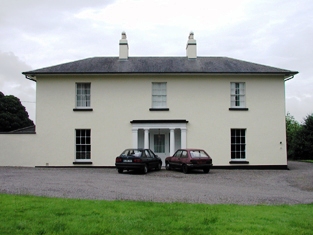
|
| Mayfield (Portlaw) | Mayfield was held by William Malcolmson from the Medlicott estate at the time of Griffith's Valuation, when it was valued at £50. Lewis refers to it as the seat of J. Malcolmson in 1837. In 1906 it was the property of William Malcomson and valued at £31. It is now a ruin. |
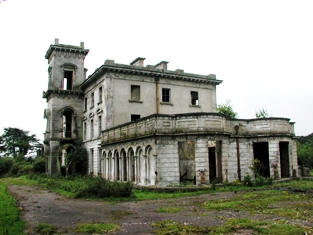
|
| Woodview House (Portlaw) | Dr. James Martin, MD, was leasing this property from the Malcolmson family at the time of Griffith's Valuation, when it was valued at £25. It is still extant and occupied. |
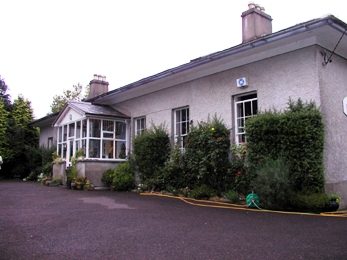
|
| Milfort/Milford House (Portlaw) | Milfort House was another property held by the Malcomson family in Portlaw. It was part of a complex designed by the well-known architect John Skipton Mullvaney. Milfort was demolished in the mid-twentieth century but some estate architecture survives. |
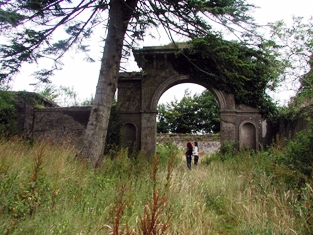
|
| Curraghmore | The house at Curraghmore is centred on the old medieval tower house of the Le Poer family to which various additions and renovations have been added. Both Smith, writing in 1774 and Wilson, writing in 1786, offer detailed contemporary descriptions of the house and demesne . At the time of Griffith's Valuation, it was valued at £210. In 1906 it was valued at £200. The 1943 ITA survey describes it in detail, stating that it was one of the finest properties in Munster, if not in all of Ireland. It is still extant and occupied by the Le Poer Beresford family. See www.curraghmorehouse.ie for more information. |

|
| Guilcagh House | At the time of Griffith's Valuation, Guilcagh was held in fee by the Beresford estate and valued at £17 10s. In 1906 it was still part of Lord Waterford's estate and valued at £16. It is no longer extant. | |
| Whitestown | Described as a huntsman's house in Griffith's Valuation in 1850, Whitestown was then valued at £14. In 1906 it was still part of Lord Waterford's estate and valued at £11. It is no longer extant. | |
| Milford House | In 1850, Mrs. Anne O'Brien was leasing this property from the Medlicott estate when it was valued at £10 15s. Morris refers to a Rogers family "of Coolroe" in the mid eighteenth century. This house is no longer extant. | |
| Ballyvallikin | In 1850 this property was being leased by John and Margaret Fitzgerald from Lord Waterford's estate when it was valued at £11. It was still part of the Waterford estate in 1906 and valued at £11 5s. Extensive farm buildings still exist at the site. | |
| Glen House (Kilmeaden) | Thomas Flahavan was leasing Glen House from Lord Waterford's estate in 1850 when it was valued at £11 10s. A house is still extant at the site. | |
| Laherdan House | In 1850, John Whelan was leasing this property from the Beresford estate when it was valued at £11 10s. It is labelled Laherdan House on the 25-inch Ordnance survey map of the 1890s. A house is still extant at the site. | |
| Ballydurn | Ballydurn was leased by George Moore from the Beresford estate in 1850 when it was valued at £10. An extensive farm exists at this site. [Grid Reference is approximate] | |
| Ballyneal House | Ballyneal was held from the Waterford estate by William Shanahan (David) at the time of Griffith's Valuation, when it was valued at £14 10s. A second house in the townland, leased by William Shanahan (John) was valued at £12 10s [S373150] There is still a house extant at this site. | |
| Ballynevin | James Moore was leasing two properties from Lord Waterford at Ballynevin at the time of Griffith's Valuation. One was valued at £22 and the second [S399178] at £10 10s. Substantial farms still exist at both sites. | |
| Bishopstown (Upperthird) | At the time of Griffith's Valuation, Catherine Hally was leasing this property, valued at £11, from the Trustees of Waterford College. Modern buildings exist at the site now. | |
| Clonea Mill | In 1850 Judith Ryan was leasing this property from the estate of Sir Benjamin Morris Wall, when it was valued at £21, including a mill. It is labelled Corn Mill on the 1st edition Ordnance Survey map but is not marked on the 25-inch map of the 1890s. | |
| Glenstown | Leased by Johanna Cormack from Lord Waterford's estate in 1850 when it was valued at almost £14. A farm exists at the site now. | |
| Kilcanavee | In 1850 William Hunt was leasing this property from Lord Waterford's estate when it was valued at £13. A farm exists at the site now. | |
| Oldgrange House | Nicholas O'Neill Power was leasing this property to James Quinn at the time of Griffith's Valuation, when it was valued at £9. Buildings are still extant at the site. | |
| Whitestown | In 1850,Lord Waterford held a property described as a "huntsman's house" in fee at Whitestown. It was valued at £14. Substantial kennels are shown nearby on the 25-inch Ordnance Survey map of the 1890s and this building is still extant. | |
| Whitestown House | David Shanahan was leasing Whitestown House from the Marquis of Waterford's estate in 1850 when it was valued at 16 10s. The original house is now derelict. This may be the property to which Wilson refers in 1786 when he notes it as seat of Mr. Ducket. | |
| Bayview House (Middlethird) | At the time of Griffith's Valuation, Rev. Nicholas Cantwell was leasing a property, valued at £18 10s, from Edward O'Neill Power. It is labelled as Boarding School on the 1st edition Ordnance Map but appears as Bayview House on the later 25-inch edition of the 1890s. Rev. Cantwell was parish priest of Tramore and the builder of the Catholic Church there. This house is still extant and occupied. |
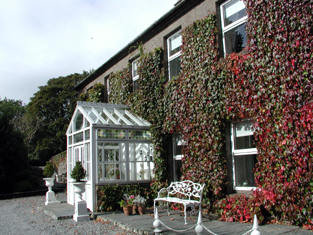
|
| Newtown House (Tramore) | Leased by Edward O'Neil-Power from Viscount Doneraile's estate at the time of Griffith's Valuation, when it was valued at £36.In 1814 it was the residence of Joseph Power. The house was sold to Pierce Power of Carrickbeg in 1858. It is still extant and occupied. |
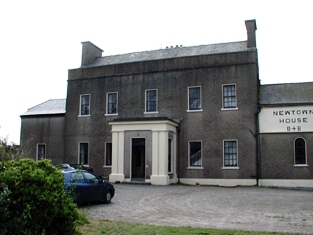
|
| Beechmount (Tramore) | In 1850 Henry Lane was leasing this property from the O'Neill-Powers when it was valued at £10. A house still exists at the site. | |
| Newtown Lodge (Tramore) | Leased by John H.Barry from the O'Neill-Power estate in 1850, when it was valued at £18 15s. There is still an extant house at the site. | |
| Newtownhill Cottage | In 1850 Edward Popham was leasing this property from Edward O'Neill-Power when it was valued at £13 10s. | |
| Annestown House | Rev. John B. Palliser held a vacant property at Annestown in 1850 which was valued at £16. In 1814 it was the seat of St. George Cole. In 1906 it was the property of Wray Palliser and valued at £22. It passed to the Galloway family though the marriage of Sybil Palliser and Harold Galloway before World I. It remained in the Galloway family until 2008 and in 2010 was offered for sale. |
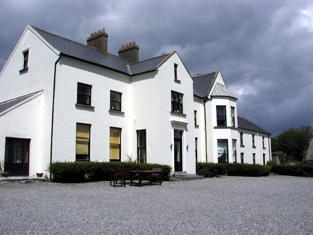
|
| Dunhill Lodge | John Power was leasing this property from the Palliser estate in 1850 when it was valued at £19. Leet's directory (1814) and early nineteenth century will records (1834) show it was the residence of William Power. There is still an extant house at the site. | |
| Benvoy | Mrs. Catherine Power held Benvoy in fee at the time of Griffith's Valuation, when it was valued at £15 5s. In 1814 William Power was resident at Benvoy. There is still a house at this site. | |
| Butlerstown House (Middlethird) | Edward T. Power was leasing this house from Richard Duckett at the time of Griffith's Valuation when it was valued at £11 15s. This house is longer extant. | |
| Butlerstown Castle | The Sherlock family had been in possession of Butlerstown Castle and estate since the 1560s. Wilson, writing in 1786, refers to Butlerstown as the seat of Thomas Sherlock. In the 1790s a disastrous fire saw much of the property destroyed and subsequently the family moved to county Kilkenny although they continued to hold estates in the area. At the time of Griffith's Valuation, it was the property of Robert Backas, three generations of whose family lived at Butlerstown, before departing at the end of the 1850s. Between then and the 1880s Butlerstown was occupied by Samuel Ferguson. In 1894 Slater refers to the property as the seat of Thomas Prendergast. Only the ruin of the castle survives but the Coachhouse is in use as Guest Accomodation. | |
| Carriganore House | John Strangeman was leasing this property from the Corporation of Waterford in 1850 when it was valued at £22. It now forms part of the Western Campus of Waterford Institute of Technology. |
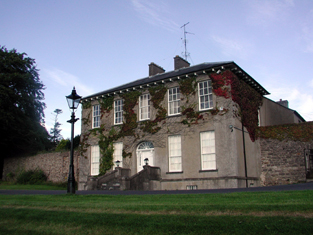
|
| Killoteran House | William Scully was leasing this property from Edward Roberts in 1850 when it was valued at £34. It is still extant and occupied. |
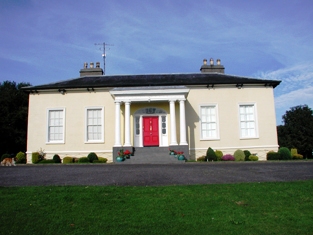
|
| Wood House (Woodville) | Thomas McGrath was leasing a house and mill from William Christmas at the time of Griffith's Valuation when the two properties had a valuation of £23. This house is labelled Woodvilla on the 1st edition Ordnance Survey Map but Wood House on the later 25-inch edition. A house is still extant at the site. The mill buildings are described as "in ruins" on the 1st edition Ordnance Survey map. | |
| Ballyduff Glebe | Reverend John Bourke was leasing this property from Viscount Doneraile at the time of Griffith's Valuation, when it was valued at £13 10s. It continued to serve as the Rectory for the parish and there is still a house at the site. | |
| Cullenagh (KIlmeadan) | Mrs. Margaret Gamble was leasing this property from Viscount Doneraile's estate in 1850 when it was valued at £11 15s. A house is still extant at the site. |

|
| Fairbrook House | At the time of Griffith's Valuation, Patrick Stephenson was leasing an extensive mill complex from Thomas Gamble at this location. It is described as Fairvew Paper Mill on the 1st edition Ordnance Survey Map and as Fairbrook Factory on the later 25-inch edition. The house and mill had a combined value of £95. The buildings are still extant. |
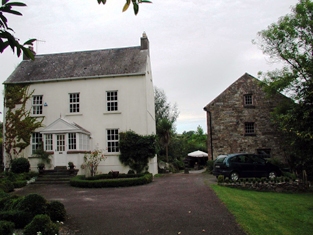
|
| The Pines (Darrigal) | Alexander Sherlock was leasing this property to Michael Nowlan in 1850 when it was valued at £13 10s. It appears to have become known as The PInes by the end of the nineteenth century. Recorded as the seat of Patrick Power by Leet in 1814. There is still a house at this site. | |
| Whitfield Court | In 1850 William Christmas held Whitfield in fee when it was valued at £49. The National Inventory of Architectural Heritage indicates the house was built by him between 1820-1849, replacing an earlier house. Local sources indicate that this earlier house was in the townland of Whitfield and the name was transferred to the existing house when it was built in the adjacent townland of Dooneen. Leet records the earlier property as the seat of Thomas Christmas in 1814. Smith, writing in 1774, mentions the house as "an elegent seat belonging to Thomas Christmas, formerly a Dobbyn castle". In 1786 Wilson refers to Whitfield as the seat of William Christmas. The nineteenth century house is still extant but no longer occupied. |
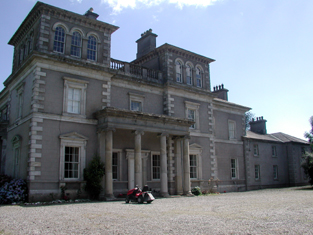
|
| Pouldrew House | In 1850 Edward Eakers was leasing this property from the Malcolmson estate. The property included part of an extensive mill complex, valued at over £36. It is still extant and occupied. |
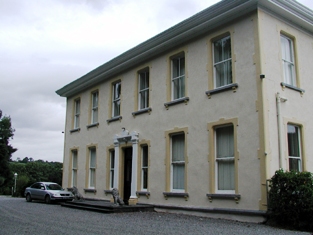
|
| Pouldrew Mill | This property is closely connected with Pouldrew House nearby. In 1850 it was leased by Edward Eakers from the Malcolmson estate and valued at £95. The mill was demolished in the twentieth century. | |
| Pembrokestown House | The house at Pembrokestown probably came into the Esmonde family through the marriage, in the eighteenth century, of Sir James Esmonde, seventh baronet, to Ellice White, daughter of Thomas White, of Pembrokestown. In 1814 Leet refers to it as the seat of William Power. At the time of Griffith's Valuation, in 1850, it was held in fee by Mrs. Anne Esmonde, and valued at £21. In 1894 Slater refers to it as the seat of Patrick W. Power. A house is still extant at Pembrokestown. |
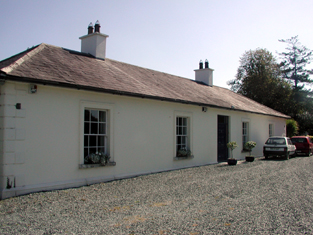
|
| Mount Congreve | Built and owned by the Congreve family from the mid-eighteenth century. Wilson states that it was "the pleasant seat of John Congreve" in 1786. Leet refers to it as the seat of Captain Fleming in 1814. At the time of Griffith's Valuation, in 1850, Mount Congreve was held in fee by John Congreve, when it was valued at £68 10s. It is still extant though a sale of the house contents took place on the premises in July 2012. |
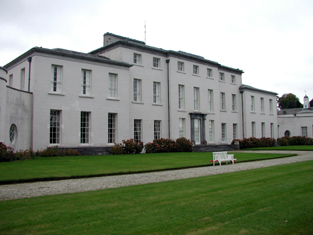
|
| Knockaderry House | The National Inventory of Architectural Heritage notes Knockaderry as a mid eigtheenth century house. Maurice Ronayne was leasing this property from Viscount Doneraile's estate at the time of Griffith's Valuation, when it was valued at £17. It had fallen into disrepair by the beginning of the twenty-first century. |

|
| Ballyduff House (Kilmeadan) | In October 1851, the sale notice for Henry Langley's property at Kilmeadan noted that the demesne at Ballyduff was well planted and the house at a little cost could be put into excellent order. The tenant at the time was John Sadlier, MP. At the time of Griffith's Valuation it had been occupied by John William Langley leasing from Henry Langley and was valued at £9. There is still an occupied house at Ballyduff. | |
| Stonehouse | In 1814 Leet records Stonehouse as the residence of Patrick Duckett. This may be the same property leased by Joseph Power from Osborne Boyce at the time of Grifith's Valuation and valued at £9. The original property does not appear to be extant. | |
| Stonebrook [Stafford] Lodge | At the time of Griffith's Valuation, Stafford Lodge was leased by Mrs. Mary Stafford from the Barron estate. It was valued at £15 10s. In the 1870s the representatives of William Stafford of Stafford Lodge owned over 250 acres in the county. On the 25-inch Ordnance Survey map of the 1890s the house is named Stonebrook Lodge. There is still a house at the site. | |
| Rockview (Decies) | Joseph N. Power was leasing this property from Sir Edward Kennedy's estate in 1851 when it was valued at £14 10s. On the 25-inch Ordnance Survey map of the 1890s it is named as Rockview. The house is still extant. | |
| Carrig Castle | Patrick Power was leasing this property from James Mandeville at the time of Griffith's Valuation, when it was valued at £17. In 1837 Lewis refers to it as the seat of H. Power. Smith, writing in 1774, mentions it as "the house and improvements of Peter Anthony". It is not named on the later 25-inch Ordnance Survey map of the 1890s. Large farm buildings are evident at the site now. | |
| Fahafeelagh | In 1851, Nicholas Power was leasing this property from the Barron estate when it was valued at £13. Recorded as the address of Catherine Barron in the 1870s. Wilson, writing in 1786, refers to Faghs as the seat of Mr. Barron. Buildings are still extant at this site. | |
| Lisnageragh | Patrick Power was leasing this property from the College of Physicians estate in 1851 when it was valued at over £17. The property is not visible on the 25-inch Ordnance Survey map of the 1890s. | |
| Seafield (Decies) | In 1851 William Power was leasing this property from Peter Anthony when it was valued at £19. In 1906 the house at Seafield was owned by James Russell and valued at £22. Lewis had noted it in 1837 as the seat of P. Barron. There is still a house at the site. | |
| Clonea Castle | In 1851 Clonea Castle was being leased by Charles Farren, MD, from Rev. Walter McGuire, when it was valued at £20. The 1854 Encumbered Estates sale notice states that Farren's lease was from year to year and he was willing to vacate the premises for the purchaser if necessary. In the 1940s the ITA survey noted that both it and the property then known as Clonea Nursing Home had been built by the Maguire family. The castle was "a square shell on the beach". | |
| Clonea Lower | A house adjacent to Clonea Castle was held in fee by Rev. Walter McGuire at the time of Griffith's Valuation, when it was valued at £10. [Grid Reference is approximate]. Buildings are still extant in the area. | |
| Coumahon | Col. Palliser was leasing this property to Patrick Stack in 1851 when it was valued at almost £10. A house still exists at the site. | |
| Furraleigh | Col. Palliser held this property in fee at the time of Griffith's Valuation, when it was valued at £34. In 1906 it was owned by Caroline G. Fairholme and valued at £44. | |
| Kilnagrange Mills | In 1851 Pierce Barron was leasing this property which included Kilnagrange Mills to Mrs. Catherine Dunn. It was valued at £14. Now the site of Flahavans oat milling company. | |
| Georgestown House | Held in fee by James Barron at the time of Griffith's Valuation, when it was valued at £22. Lewis refers to it as the seat of J. Barron in 1837. In the 1870s it was the seat of John M. Barron. The house was offered for sale as part of the Georgestown estate in April 1885 on behalf of Pierse John Barron, a minor. The sale notice describes it as "a two-storey residence in the owner's possession". It was later owned by the Beresford family. In more recent times it was the centre of a stud farm and in 2010 was offered for sale. |
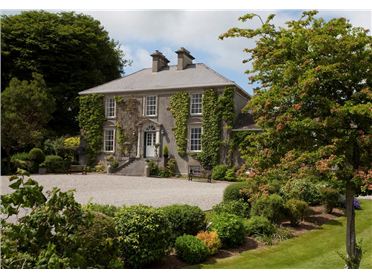
|
| Tankardstown Mine House | In 1851 John Petherick wsa leasing this property from Mrs. Barron's estate when it was valued at £9. A house still exists at the site. Petherick was the mine manager of the Tankardstown Copper Mine. |
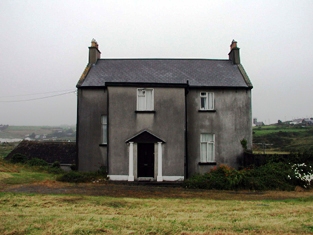
|
| Gardenmorris | Held in fee by John P. O'Shea at the time of Griffith's Valuation, when it was valued at £56. It was also noted by Lewis as his residence in 1837. Smith referred to it as the house of Mr. Richard Power in 1774. Noted by Slater as the residence of Nicholas Power O'Shee in 1894 and owned by Richard P. O'Shee and valued at £57 in 1906. The house was totally reconstructed following its burning during the Civil War in 1922. The ITA survey in 1942 noted that most of the library and works of art in the house were destroyed at that time. It is still extant and occupied. |

|
| Kilbarrymeadan | In 1851 John Casey was leasing this property from the Earl of Stradbroke's estate, when it was valued at £17. It is still extant and occupied in the village of Kill, county Waterford. |

|
| Kilrossanty Mill | In 1851, Mrs. Mary Callaghan was leasing this property, which included a corn mill, from Sir Edward Kennedy's estate when it was valued at £11 10s. The mill building is still extant. |
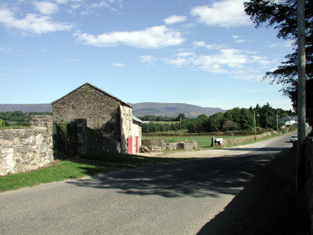
|
| Carrigmoorna House | In 1851 Thomas P. Sherlock held this property from Sir Edward Kennedy's estate when it was valued at £16. On the 25-inch Ordnance Survey map of the 1890s it is named Carrigmoorna House. A modern house appears to occupy the site. |
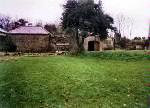
|
| Comeragh House | At the time of Griffith's Valuation, Col. Wray Palliser was leasing this property from Phineas Hunt, when it was valued at £28. It is recorded as the address of John Palliser in the 1870s. Though badly damaged by fire in 1923, Comeragh house was restored and is still extant. The ITA survey of 1942 noted it was in the ownership of Captain Fairholme at that time. It was offered for sale in 2010. |
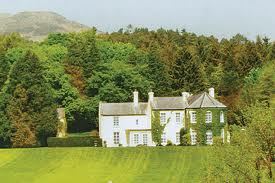
|
| Briska House | Leased by Robert Acheson from Col. Palliser in 1851 when it was valued at £11. On the 25-inch Ordnance Survey map of the 1890s it is named Briska House. A house is still extant at the site. | |
| Glenview {?}/Comeragh-house B | In 1851, Rev. William Ardagh was leasing a property adjacent to Comeragh House from the Palliser estate when it was valued at almost £10. A house and farm buildings are still extant at the site. Walford gives Rev. Ardagh's address as Glenview which may refer to this house. | |
| Mount Kennedy | At the time of Griffith's Valuation, John Power was leasing this property from Margaret Power when it was valued at £13 10s. It is still extant and occupied. |
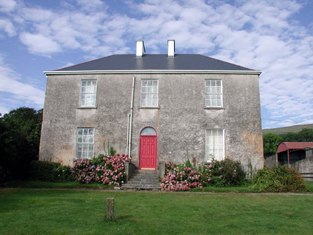
|
| Cutteen House | Phillip Coffey held this property from Edward Gallwey at the time of Griffith's Valuation when it was valued at almost £10. He also held an estate of over 1200 acres there. The 25-inch Ordnance Survey map of the 1890s names the property as Cutteen House. | |
| Comeragh Lodge | Thomas Hunt was leasing this property from Col. Palliser's estate in 1851, when it was valued at £14. It is still extant and occupied. |
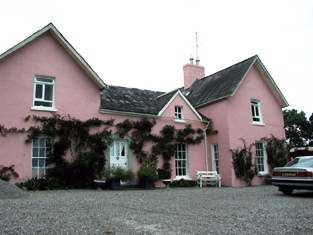
|
| Scrahan | At the time of Griffith's Valuation, Thomas Shanahan was leasing this property from the Marquis of Waterford's estate when it was valued at £14 10s. An extensive farm complex exists at the site. | |
| Whitestown House (Kilmacthomas) | In 1851, Stephen Moore was leasing this property from the Marquis of Waterford, when it was valued at almost £10. It is still extant and occupied. |
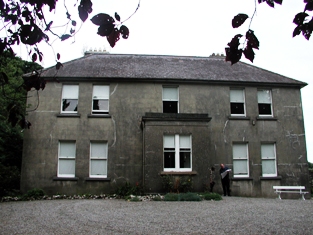
|
| Carrickahilla Presbytery | Rev. Michael Power, PP, was leasing this property from the Barron estate in 1851 when it was valued at £12. It is labelled Presbytery on the 25-inch Ordnance Survey map of the 1890s. There is still a house extant at this site. | |
| Carrickbarrahane House | James R. Smyth was leasimg this property from the trustees of Mrs. Osborne in 1851 when it was valued at £23. The National Inventory of Architectural Heritage suggests it was built c.1820. It is still extant. | |
| Carrickanna | At the time of Griffith's Valuation, Phineas Hunt was leasing this property from Robert Uniacke, when it was valued at £11. It is labelled Carrickanna on both the First and 25-inch edition Ordnance Survey Maps. The original house is no longer extant. | |
| Stradbally Rectory | Rev. George T. Roche was leasing this property from the Uniacke estate at the time of Griffith's Valuation, when it was valued at £20. The house is still extant. |
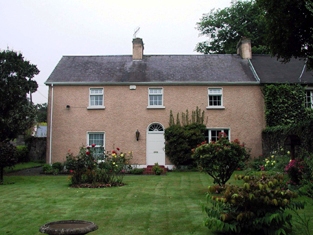
|
| Woodhouse (Stradbally) | Robert Uniacke held this property in fee at the time of Griffith's Valuation, when it was valued at £52 10s. In 1894 Slater refers to it as the seat of Robert H. Beresford. In 1906 it was the property of John Beresford and still valued at over £52. Smith referred to it in 1774 as the estate of Borr Uniake. Peacock notes that the Woodhouse estate was successively owned by Fitzgeralds (up to 1724), the Uniackes (until 1855) and after that the Beresfords. In 1942, the ITA survey notes that the owner of the house, Major Lord William Beresford was then resident in India. The house is still extant and well-maintained. It was sold in 2013. |

|
| Sarahville | In 1851 held in fee by Richard Barron when it was valued at £25. James Barron of Sarahville is named in the will of Pierce Barron, dated 1808. James' wife was Sarah Gee. There is still a house at this site. | |
| Ballynabanoge | Michael Power was leasing this property to Michael Lenehan at the time of Griffith's Valuation, when it was valued at £9. In 1906 it was the property of Patrick J. Power and valued at £8 10s. Modern buildings are present at the site. | |
| Glenview/Glenamara | This house is labelled on the 25-inch Ordnance Survey Map of the 1890s as Glenview. It is possibly the property leased by Rev. Thomas Drought from Frederick Carter at the time of Griffith's Valuation when it was valued at £14. It seems to have become known as Glenamara in the twentieth century during which time it came into the possession of the Spring-Rice family who offered it for sale in 2011. |

|
| Knockane Lodge | Hussey de Burgh cites Knockane Lodge as the address of William H.F. Bosanquet in the 1870s. This may the second house noted in the townland of Knockane at the time of Griffith's Valuation, which was being leased by the Rockett family. | |
| Woodlock House (Portlaw) | A house built for the Malcolmson family after Griffith's Valuation, it is labelled Woodlock House on the 25-inch Ordnance Survey map of the 1890s. The National Inventory of Architectural Heritage indicates that it was designed by John Skipton Mulvany. In the twentieth century it became a convent and is still extant and occupied. |

|
| Rossmore House | At the time of Griffith's Valuation, Benjamin Barton was the lessor of a property valued at over £13. He also held lands from the Marquis of Waterford's estate in the parish of Rossmore, barony of Decies without Drum. |

|
| Glenview (Stradbally) | At the time of Griffith's Valuation, Rev. Thomas Drought was leasing a property valued at £14 from Frederick Carter. This may be the house which afterwards became known as Glenview. It is still extant and well maintained. |

|
| Newtown Glebe | Rev. Edward Daulton was leasing this property from the O'Neill-Power estate in 1850 when it was valued at £14. There is still a house at the site. | |
| Amberhill House | Wilson, writing in 1786, refers to Amber Hill as the seat of Stephen Worthvale. By the time of Griffith's Valuation, this townland was part of the St. Leger estate and Amberhill was occupied by Stephen Gamble when the buildings were valued at over £8. A farm is still extant at the site. |

